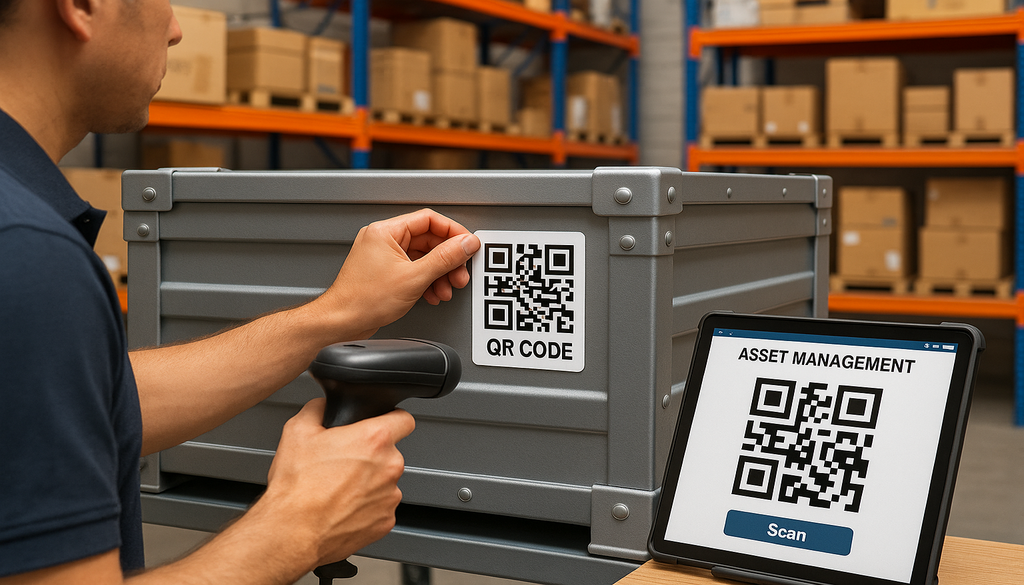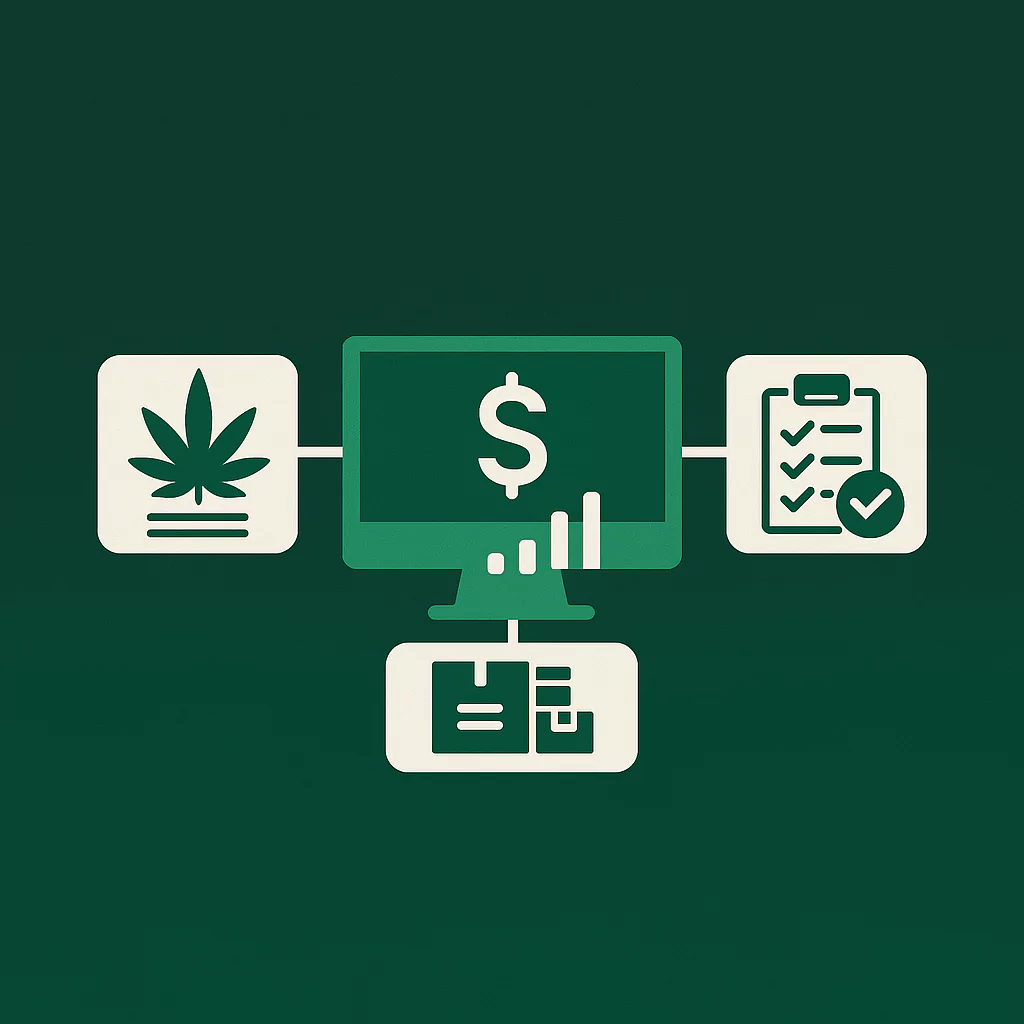Optimizing Asset Management in Warehouses Using QR Code Tracking
In the fast-paced world of warehouse management, efficiency and accuracy are paramount. As supply chains become increasingly complex, the need for robust asset tracking systems has never been more critical. QR codes, a technology that has been around for decades, are now gaining traction as a powerful tool for asset management in warehouses. This guide will delve into how QR codes can streamline operations, improve accuracy, and enhance overall efficiency in warehouse settings. By the end of this article, you’ll understand the practical benefits of QR code technology and how to implement it effectively.
Understanding QR Codes and Their Role in Asset Tracking
QR codes, or Quick Response codes, are two-dimensional barcodes that store information in a matrix of black and white squares. Unlike traditional barcodes, QR codes can hold a significant amount of data, including URLs, text, and other types of information. This makes them particularly useful for asset tracking in warehouses, where detailed information about each asset is crucial.
When compared to other tracking technologies like RFID (Radio Frequency Identification) and traditional barcodes, QR codes offer several advantages. While RFID can track assets without line-of-sight and at greater distances, it is often more expensive to implement due to the cost of RFID tags and readers. Barcodes, on the other hand, are limited in the amount of data they can store and require direct line-of-sight scanning. QR codes strike a balance by being cost-effective, easy to generate, and capable of storing more information than barcodes.
In warehouse settings, QR codes provide a versatile and efficient solution for asset tracking. They can be easily scanned using smartphones or dedicated scanners, making them accessible to a wide range of users. Additionally, QR codes can be printed on labels or embedded in durable materials, ensuring longevity and reliability in various environments.
Setting Up QR Code Systems for Warehouse Asset Management

Implementing a QR code system for asset management in a warehouse involves several key components. First, you’ll need a software platform capable of generating and managing QR codes. This software should integrate seamlessly with your existing warehouse management system (WMS) to ensure smooth data flow and real-time updates.
To set up a QR code tracking system, follow these steps:
- Identify Assets: Begin by cataloging all assets that need tracking. This includes inventory, equipment, and any other items critical to your operations.
- Generate QR Codes: Use a QR code generator to create unique codes for each asset. Ensure that each code contains relevant information, such as asset ID, description, and location.
- Label Assets: Print the QR codes on durable labels and affix them to the corresponding assets. Consider the environment where the assets are stored to choose the appropriate label material.
- Integrate with WMS: Ensure that your QR code system is integrated with your warehouse management system. This allows for real-time tracking and updates, improving accuracy and efficiency.
- Train Staff: Educate your team on how to use the QR code system, including scanning procedures and troubleshooting common issues.
By following these steps, you can establish a robust QR code tracking system that enhances asset visibility and control.
Best Practices for QR Code Placement and Maintenance
Proper placement and maintenance of QR codes are crucial for ensuring their effectiveness in asset tracking. Here are some best practices to consider:
- Optimal Placement: Place QR codes in easily accessible locations on each asset. Avoid areas that are prone to wear and tear, such as edges or corners that may be frequently handled.
- Durability: Use high-quality labels that can withstand environmental factors such as moisture, temperature fluctuations, and abrasion. Laminated or coated labels can enhance durability.
- Regular Audits: Conduct regular audits to ensure that all QR codes are intact and readable. This includes checking for wear and tear, as well as verifying that the information encoded in the QR codes is up-to-date.
- Data Updates: As assets are moved or updated, ensure that the QR code data reflects these changes. This may involve reprinting labels or updating the information in your WMS.
By adhering to these best practices, you can maintain the integrity and reliability of your QR code tracking system, ensuring that it continues to deliver accurate and timely information.
Case Studies: Successful QR Code Implementation in Warehouses

Several warehouses have successfully implemented QR code systems, reaping significant benefits in terms of efficiency and accuracy. For instance, a large distribution center in the Midwest adopted QR codes to track inventory and equipment. By integrating QR codes with their existing WMS, they achieved a 30% reduction in asset retrieval times and a 20% decrease in inventory discrepancies.
Another example comes from a manufacturing facility that used QR codes to streamline their maintenance operations. By tagging equipment with QR codes that linked to maintenance records and schedules, they improved equipment uptime by 15% and reduced maintenance costs by 10%.
These case studies highlight the tangible benefits of QR code implementation, demonstrating how this technology can lead to measurable improvements in warehouse operations.
Advanced Techniques and Tools for Enhancing QR Code Asset Tracking
![]()
To further enhance the effectiveness of QR code asset tracking, consider leveraging advanced techniques and tools. Several software solutions are available that offer enhanced features for QR code management, such as real-time analytics, automated alerts, and integration with IoT devices.
Mobile devices and specialized scanners can also play a significant role in QR code tracking. Many smartphones are equipped with cameras capable of scanning QR codes, making it easy for staff to access asset information on the go. Additionally, dedicated QR code scanners can provide faster and more accurate scanning in high-volume environments.
Looking to the future, QR code technology continues to evolve, with potential applications in augmented reality (AR) and blockchain for enhanced security and traceability. By staying abreast of these trends, warehouses can continue to optimize their asset management processes and maintain a competitive edge.
Conclusion
QR codes offer a simple yet powerful solution for asset management in warehouses. By implementing a QR code tracking system, warehouses can achieve greater accuracy, efficiency, and control over their assets. The key to success lies in proper implementation and maintenance, ensuring that QR codes remain readable and up-to-date. As technology continues to advance, QR codes will likely play an increasingly important role in modern warehouse operations. Embrace this technology today to unlock new levels of operational excellence.
Frequently Asked Questions (FAQ)
Q1: How cost-effective is QR code tracking compared to other asset tracking methods?
A1: QR code tracking is generally more cost-effective due to lower setup and maintenance costs compared to technologies like RFID. QR codes do not require expensive tags or readers, and they can be easily generated and printed using standard office equipment.
Q2: Can QR codes be used for tracking assets in outdoor warehouse environments?
A2: Yes, QR codes are versatile and can be used in both indoor and outdoor settings. However, it is important to consider environmental factors such as weather and sunlight exposure. Protective casings or weather-resistant labels can help maintain the integrity of QR codes in outdoor environments.
Q3: What are the common challenges faced when implementing QR code tracking in warehouses?
A3: Challenges include ensuring all assets are tagged, maintaining code visibility and readability, and integrating the system with existing WMS. Additionally, training staff to use the new system effectively and ensuring regular updates to the QR code data are crucial for success.
Q4: How secure is QR code tracking for asset management?
A4: QR codes are relatively secure, but it is crucial to implement data encryption and access controls to enhance security. Ensuring that only authorized personnel can access and modify QR code data helps protect against unauthorized access and tampering.
Q5: Are there any limitations to the types of assets that can be tracked with QR codes?
A5: While QR codes are highly adaptable, very small or irregularly shaped items may pose challenges for tagging and scanning. In such cases, alternative methods or additional labeling techniques may be required to ensure effective tracking.
{
“@context”: “https://schema.org”,
“@type”: “FAQPage”,
“mainEntity”: [
{
“@type”: “Question”,
“name”: “How cost-effective is QR code tracking compared to other asset tracking methods?”,
“acceptedAnswer”: {
“@type”: “Answer”,
“text”: “QR code tracking is generally more cost-effective due to lower setup and maintenance costs compared to technologies like RFID. QR codes do not require expensive tags or readers, and they can be easily generated and printed using standard office equipment.”
}
},
{
“@type”: “Question”,
“name”: “Can QR codes be used for tracking assets in outdoor warehouse environments?”,
“acceptedAnswer”: {
“@type”: “Answer”,
“text”: “Yes, QR codes are versatile and can be used in both indoor and outdoor settings. However, it is important to consider environmental factors such as weather and sunlight exposure. Protective casings or weather-resistant labels can help maintain the integrity of QR codes in outdoor environments.”
}
},
{
“@type”: “Question”,
“name”: “What are the common challenges faced when implementing QR code tracking in warehouses?”,
“acceptedAnswer”: {
“@type”: “Answer”,
“text”: “Challenges include ensuring all assets are tagged, maintaining code visibility and readability, and integrating the system with existing WMS. Additionally, training staff to use the new system effectively and ensuring regular updates to the QR code data are crucial for success.”
}
},
{
“@type”: “Question”,
“name”: “How secure is QR code tracking for asset management?”,
“acceptedAnswer”: {
“@type”: “Answer”,
“text”: “QR codes are relatively secure, but it is crucial to implement data encryption and access controls to enhance security. Ensuring that only authorized personnel can access and modify QR code data helps protect against unauthorized access and tampering.”
}
},
{
“@type”: “Question”,
“name”: “Are there any limitations to the types of assets that can be tracked with QR codes?”,
“acceptedAnswer”: {
“@type”: “Answer”,
“text”: “While QR codes are highly adaptable, very small or irregularly shaped items may pose challenges for tagging and scanning. In such cases, alternative methods or additional labeling techniques may be required to ensure effective tracking.”
}
}
]
}




